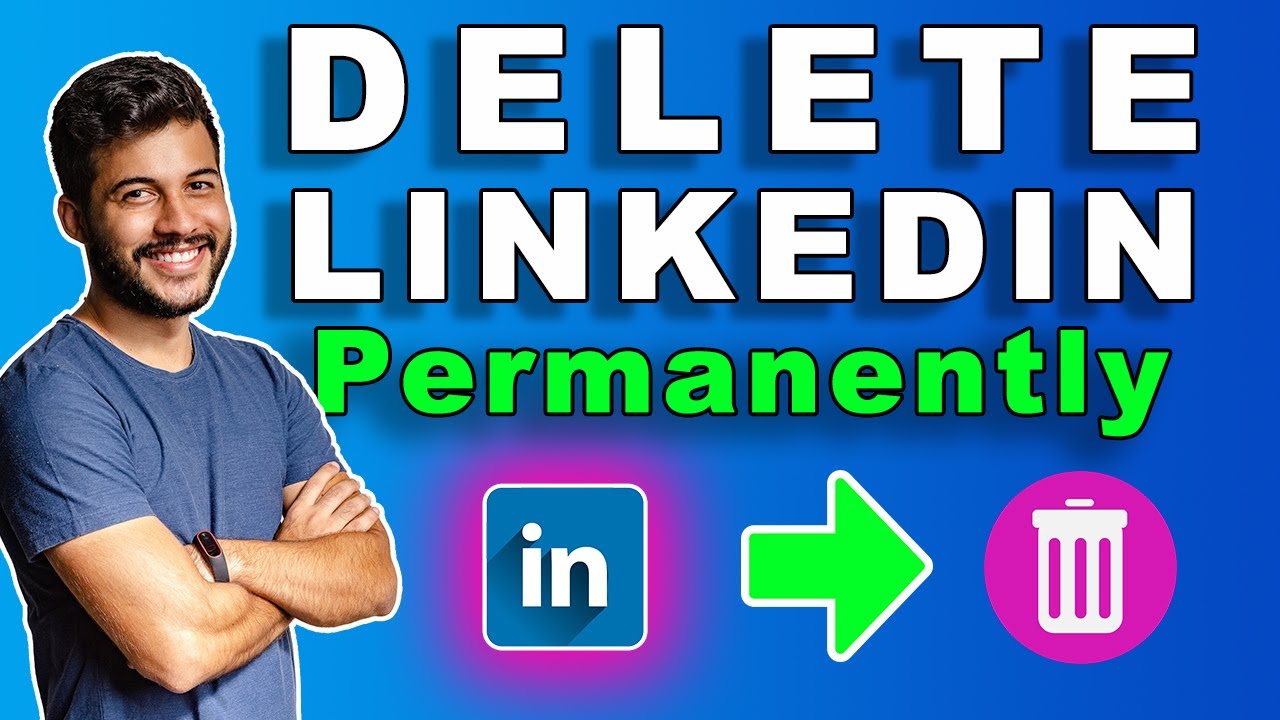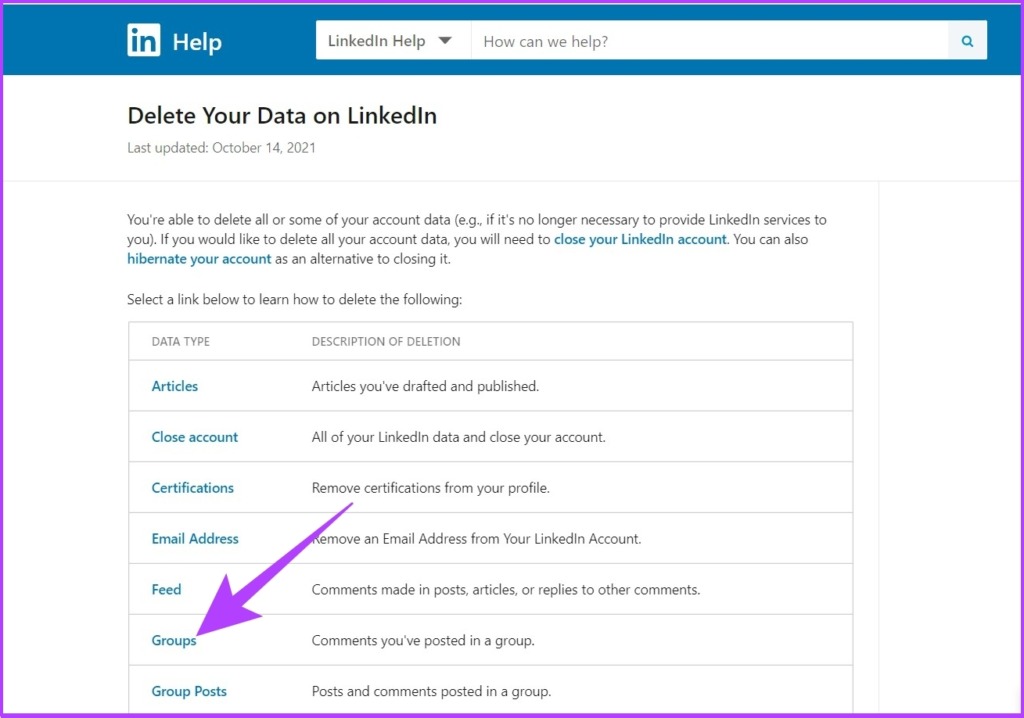Are you feeling overwhelmed by your digital footprint? Maybe it’s time to consider deleting your LinkedIn account. Whether you're looking for privacy, simplifying your online presence, or moving in a different professional direction, this guide will walk you through the process of permanently deleting your LinkedIn account. Let’s dive in and explore the reasons that might lead you to make this significant decision.
Reasons to Delete Your LinkedIn Account

Deciding to delete your LinkedIn account can be a big step, and there are several reasons why you might want to take that plunge. Here are some common motivations:
- Privacy Concerns: In today's digital age, privacy is paramount. If you’re uncomfortable with how much information LinkedIn collects or shares about you, it might be time to say goodbye. Many users feel that the amount of personal data linked to their accounts can be unsettling.
- Limited Use: If you've found yourself logging into LinkedIn less frequently (or not at all), it might not make sense to keep your account active. Many people create accounts but later realize they prefer other networking methods, like in-person meetings or professional conferences.
- Professional Life Changes: Perhaps you've switched careers or decided to retire. A change in your professional landscape can lead to a reconsideration of your social media presence. If LinkedIn no longer aligns with your career goals, deleting your account could be a smart move.
- Negative Experiences: Unfortunately, not all experiences on LinkedIn are positive. If you’ve encountered harassment, unwanted messages, or even spam, you might feel that it’s not worth the hassle to keep your account. Protecting your mental well-being should always come first.
- Desire for Minimalism: In the age of digital clutter, many are adopting a minimalist approach to their online lives. If you’re looking to streamline the platforms and apps you utilize, removing LinkedIn may be a part of that journey towards simplicity.
In addition to the above reasons, consider the potential impact on your professional brand. If you've established connections elsewhere or have a different focus in your career, the potential negative implications of an inactive or outdated LinkedIn profile might not be worth holding onto it.
Ultimately, the decision is personal and varies from individual to individual. If any of these reasons resonate with you, it might be time to take the step to delete your LinkedIn account. In the following sections, we’ll guide you through the actual process for those ready to make the shift!
Also Read This: Do You Need LinkedIn Premium to Message Someone? Understanding Limitations
3. Preparing to Delete Your Account

Before you take the plunge and delete your LinkedIn account, it’s essential to do a bit of preparation. Taking the time to gather your thoughts and information can save you from regret later on. Here are some key steps to consider:
- Backup Your Connections: Think about the professional connections you've made over the years. You might want to export your contacts to keep them for future reference. LinkedIn allows you to download your connection data, making it easier to stay in touch even after you leave the platform.
- Save Personal Data: Besides connections, consider downloading other data, such as your messages, profile information, and endorsements. You never know when you might want to refer back to a conversation or a recommendation!
- Notify Important Contacts: It's polite to inform your key contacts, especially if you plan to use other platforms for networking. A quick message can help maintain those ties.
- Reflect on Your Decision: Ask yourself why you want to delete your account. Is it because of privacy concerns, time management, or perhaps the platform isn't serving your career goals? Ensure that you’re making this decision for the right reasons.
- Consider Alternatives: If you're feeling overwhelmed, consider if you can take a break instead. You can deactivate your account temporarily, which would hide your profile without losing all your data.
Once you’re prepared and certain that deleting your account is the right choice, you'll be ready to follow through with the next steps. It’s about making sure your professional image remains intact, even as you move away from LinkedIn.
Also Read This: How to Change Your LinkedIn Email Address
4. Step-by-Step Guide to Delete Your LinkedIn Account
Alright, you're ready to say goodbye to LinkedIn! Let’s walk through the deletion process step-by-step. Don’t worry; it’s straightforward, and I’ll guide you through it:
- Log into Your LinkedIn Account: Open your web browser or LinkedIn app and sign in with your credentials. You can't delete your account without being logged in.
- Access Your Settings: Click on your profile picture at the top right corner of the homepage. From the dropdown menu, select "Settings & Privacy." This will take you to a page where you can manage your account settings.
- Select Account Management: In the Settings menu, look for the “Account preferences” section located on the left sidebar. Click on it to proceed.
- Find the Option to Close Your Account: Scroll down until you find “Close your LinkedIn account.” Click on this option, and don’t worry, we’re almost there!
- Follow the Prompts: LinkedIn will ask you why you’re closing your account. You can choose a reason from the provided list or select “Other.” It’s completely optional, but LinkedIn values this feedback.
- Confirm Your Decision: After you’ve chosen your reason, LinkedIn will ask for confirmation that you indeed want to delete your account. Take a deep breath, review everything, and then click “Next.”
- Enter Your Password: For security reasons, LinkedIn will require you to enter your password one last time to confirm that you’re the one making this decision. Go ahead and type it in.
- Final Confirmation: Hit “Close Account” to finalize the process. A confirmation message will appear, letting you know your request is being processed. And just like that, you've done it!
And there you have it! You've successfully deleted your LinkedIn account. Remember, if you ever change your mind, you can always create a new account later. Your professional journey is not defined by any single platform!
Also Read This: How to Write and Publish an Engaging Article on LinkedIn
5. What Happens After Deleting Your Account
So, you’ve made the decision to delete your LinkedIn account. But what comes next? It’s important to understand the implications of your choice. Here’s a breakdown of what happens after you hit that delete button:
- Your Profile Is No Longer Visible: Once your account is deleted, your profile and all associated information will be removed from the LinkedIn platform. This means nobody will be able to find you or see any of the connections or posts related to your account.
- Data Retention: LinkedIn states that they may retain some data for a limited period for legal reasons or to meet their obligations. However, your profile information will be gone from the visible network.
- Loss of Connections: All the connections you’ve made, along with any endorsements, recommendations, and your professional network, will be lost. This can feel daunting if you’ve invested time in building these relationships.
- Group Memberships Disappear: If you were part of any groups, your memberships will be removed as well. If you ever decide to rejoin LinkedIn, you’ll need to request membership again to any groups you were previously part of.
- Data Backup: It’s worth noting that if you downloaded your data from LinkedIn before deleting your account, you’ll still have access to a backup of your connections and interactions. Just remember that you won't be able to upload or restore this data after deletion.
Ultimately, deleting your account is a significant action that should be carefully considered. Take time to weigh the long-term implications, especially in relation to your professional network and future opportunities.
Also Read This: How to View LinkedIn Profiles Without Signing In
6. Alternatives to Deleting Your LinkedIn Account
If you’re feeling frustrated with LinkedIn but aren’t quite ready to delete your account, you’re not alone! Luckily, there are alternatives that might help you manage your experience without completely wiping your digital presence. Here are some options to consider:
- Deactivate Your Account: Instead of deleting, you can deactivate your account temporarily. This option allows you to take a break from LinkedIn without permanently losing your data and connections. It’s a great way to step back and reassess your need for the platform.
- Update Privacy Settings: If you're worried about privacy or unwanted attention, consider tweaking your privacy settings. You can adjust who sees your profile, limit search visibility, and even hide your activity updates from connections.
- Curate Your Network: If connections are causing anxiety or unwanted interactions, think about cleaning up your network. You can remove connections who no longer align with your professional goals or who you don’t wish to engage with anymore.
- Limit Notifications: Overwhelmed by notifications? You can turn off or customize your notification settings. This way, you can control the information you receive, helping reduce distractions while staying on the platform.
- Pause Activity: Take a break from posting or engaging actively in discussions. Sometimes, stepping back from contributing can provide a fresh perspective and help you pinpoint if you genuinely want to continue using LinkedIn.
Deciding to delete your LinkedIn account can feel overwhelming, but exploring these alternatives might provide the relief you need without giving up your connections and network completely. Remember, it’s okay to take a step back and reassess what works best for you in the professional realm!
Conclusion
In summary, permanently deleting your LinkedIn account can be an important step for various reasons, whether it’s to enhance your privacy, reduce digital clutter, or simply step away from the professional networking scene. The process is straightforward but should be approached with care. Before you proceed, consider the following:
- Backup Your Data: Make sure to download a copy of your LinkedIn data, which includes your connections, recommendations, and messages.
- Notify Your Connections: If appropriate, inform your connections about your decision to leave, especially if you collaborated or worked closely with them.
- Consider Temporary Options: If you’re unsure about permanently deleting your account, consider temporarily deactivating it instead.
After going through the necessary steps on the platform, you can rest assured that your account will be deleted after a grace period, during which you can reconsider your decision if needed. Remember that once your account is deleted, you won’t be able to recover any of your previously stored data.
Ultimately, taking control of your online presence is crucial in today’s digital age, and deleting your LinkedIn account is a significant step in that direction. Whether it’s for mental clarity or a fresh start, know that you can rejoin LinkedIn at any time if you decide to return to the platform.
 admin
admin








